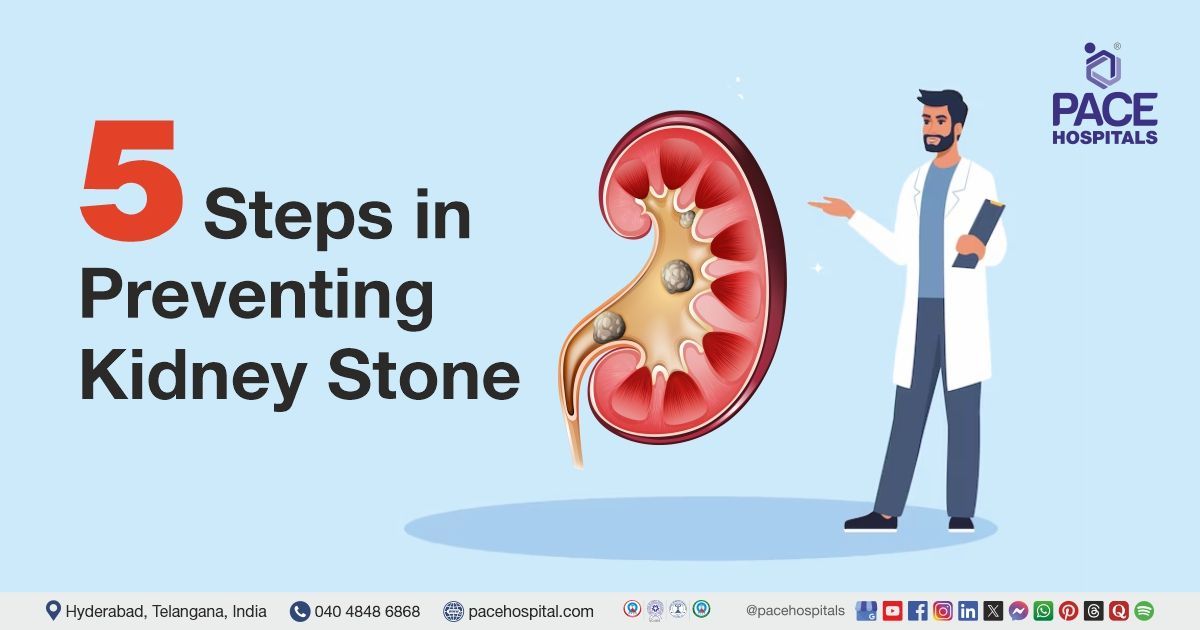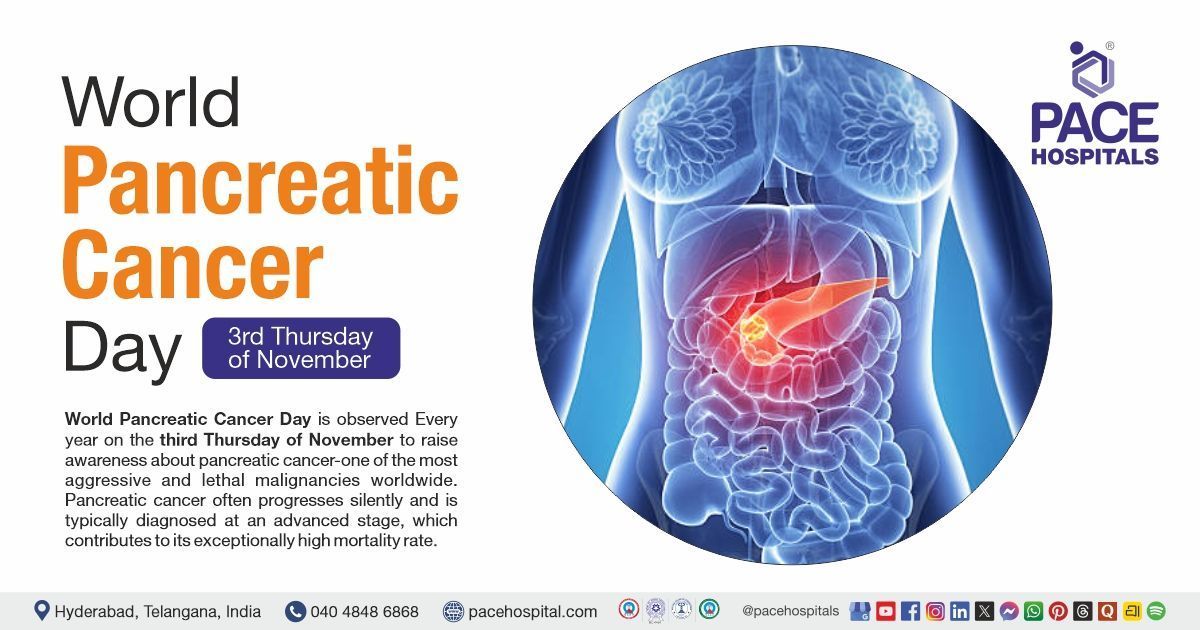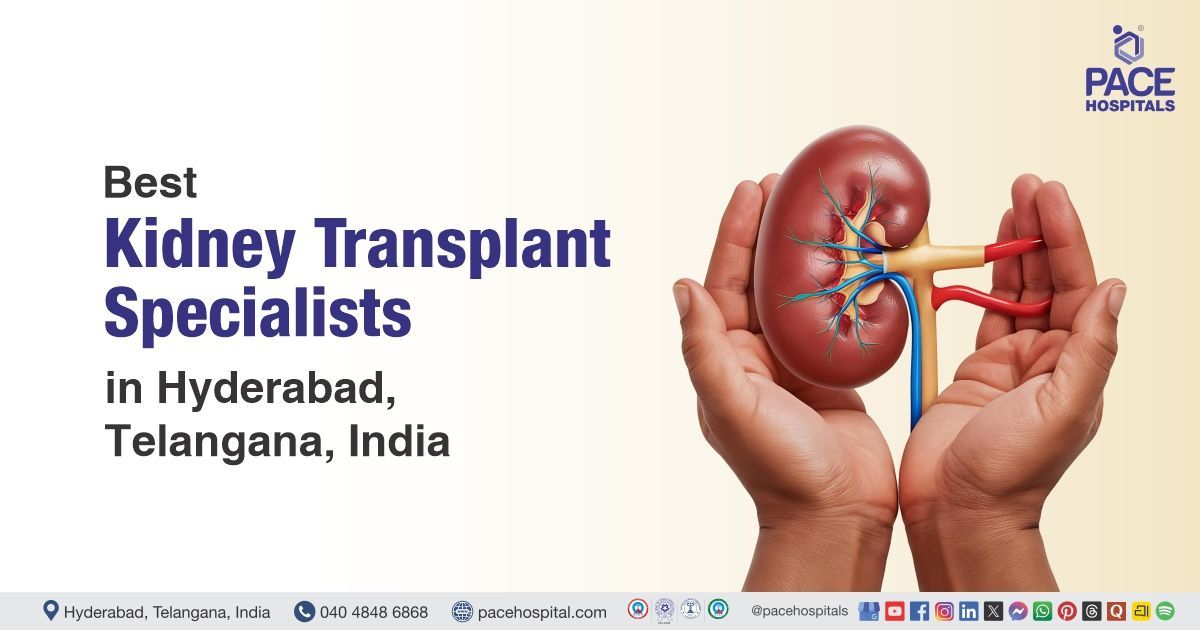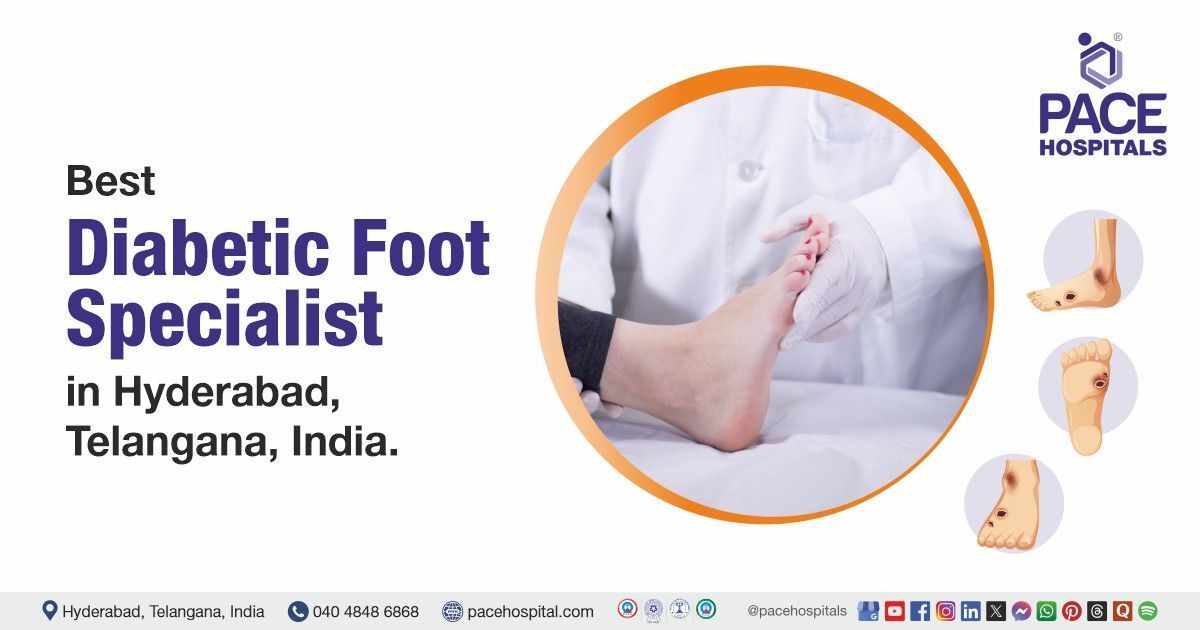Successful Living-Donor Liver Transplantation in a 50 Y.O. Male with Decompensated Chronic Liver Disease
PACE Hospitals
PACE Hospitals’ expert Liver Transplant team successfully performed a living-related donor liver transplantation (extended right lobe graft) on a 50-year-old male patient with decompensated chronic liver disease, portal hypertension, coagulopathy, and gastroesophageal variceal bleeding. The aim of the procedure was to replace the diseased liver, restore normal liver function, and prevent life-threatening complications associated with end-stage liver failure.
Chief Complaints
A 50-year-old male patient with a
body mass index (BMI) of 21 presented to the Liver Transplant Department at
PACE Hospitals, Hitech City, Hyderabad, with a 5-year history of yellowish discoloration of the eyes, swelling of both lower limbs intermittently for one year, generalized weakness for six months, and loss of appetite for the past three months.
Past Medical History
The patient had a history of chronic liver disease (CLD) diagnosed approximately 5 years ago during evaluation for jaundice and has been on regular medications since. He had hematemesis (vomiting blood) in the past, for which he underwent endoscopic variceal ligation (EVL) twice.
He was a known case of Type 2 diabetes mellitus and hypertension, managed with regular medications. He had no history of hepatorenal syndrome, hepatopulmonary syndrome, hepatic encephalopathy, abdominal distension, or ascites. The patient had no prior abdominal surgeries.
On Examination
On examination, the patient was conscious, alert, oriented, and hemodynamically stable. Vital signs were within normal limits, and oxygen saturation was maintained. Mild icterus and pallor were noted, along with bilateral pitting edema of the lower limbs.
Abdominal examination revealed a soft, non-tender abdomen without distension or clinically appreciable ascites at presentation. Cardiovascular and respiratory examinations were unremarkable, with no evidence of pulmonary congestion. Neurological examination was normal, and there were no signs of hepatic encephalopathy.
Diagnosis
Following the clinical evaluation, the liver transplant team conducted a comprehensive assessment, including a detailed review of the patient’s history of long-standing jaundice, lower-limb swelling, generalized weakness, loss of appetite, and previously treated episodes of variceal bleeding.
To confirm the diagnosis and evaluate the severity of hepatic dysfunction, a complete clinical and systemic examination was performed. The patient exhibited mild icterus, pallor, and bilateral lower-limb edema, which were consistent with chronic liver disease. There were no signs of hepatic encephalopathy, and cardiovascular, respiratory, and neurological examinations were unremarkable. Abdominal examination revealed no distension and no clinical evidence of ascites at presentation.
A comprehensive series of laboratory and imaging investigations was carried out. Serial liver function tests showed markedly elevated total and direct bilirubin, mildly raised liver enzymes, hypoalbuminemia, and reduced total protein levels. Complete blood counts (CBC) demonstrated anemia and thrombocytopenia. Serum electrolytes revealed mild hyponatremia and hypokalemia. Ultrasound with liver Doppler showed a cirrhotic liver morphology with portal hypertension and collateral vessels, supporting the diagnosis of advanced chronic liver disease.
The patient’s Model for End-Stage Liver Disease (MELD) score, calculated from serum bilirubin, INR, creatinine, and sodium levels, was used to assess the urgency of liver transplantation.
Based on the confirmed diagnosis, the patient was advised to undergo
Decompensated Chronic Liver Disease Treatment in Hyderabad, India, under the care of the liver transplant team, ensuring restoration of liver function and prevention of life-threatening complications.
Medical Decision-Making (MDM)
After a detailed consultation with Dr. Govind Verma Senior Consultant in Gastroenterology and Hepatology, along with cross-consultation by Dr. Tripti Sharma, Dr. CH Madhusudhan, Dr. Abhik Debnath, Dr. Lakshmi Kumar Chalamarla, a comprehensive evaluation was performed to determine the most appropriate diagnostic and therapeutic approach. Considering the patient’s long-standing history of jaundice, known chronic liver disease, prior episodes of hematemesis due to variceal bleed, lower-limb edema, and constitutional symptoms, a focused systemic assessment and detailed review of laboratory and imaging findings were undertaken to formulate an optimal treatment strategy.
Based on the clinical features and investigations, which confirmed decompensated chronic liver disease with portal hypertension, coagulopathy, and gastroesophageal variceal bleed, it was determined that Living Related Donor Liver Transplantation with an extended right lobe graft was identified as the most suitable definitive intervention to restore hepatic function, reduce portal pressures, and prevent further life-threatening complications.
The patient and family members were thoroughly counselled regarding the severity of the liver disease, the necessity of liver transplantation, the severity of the surgical procedure, the associated risks, and the anticipated postoperative course and long-term follow-up.
Surgical Procedure
Following the decision, the patient was scheduled to undergo Living Related Donor Liver Transplantation Surgery in Hyderabad at PACE Hospitals under the expert supervision of the liver transplant team.
The following steps were carried out during the procedure:
- Incision and Abdominal Exploration: A Mercedes Benz incision was given to provide wide upper abdominal exposure. The abdomen was entered, and the liver was inspected, revealing macronodular cirrhosis with minimal ascites. Multiple perihepatic and perigastric collaterals were noted, consistent with portal hypertension.
- Adhesiolysis and Native Liver Mobilization: Dense adhesions between the superior surface of the liver and the diaphragm were identified and carefully released (adhesiolysis done). The resultant diaphragmatic defect was repaired with 2-0 Prolene sutures. Gastric adhesions to the undersurface of the liver and gallbladder were also released to allow complete mobilization of the native liver.
- Portal Dissection and Caval Control: Portal dissection was carried out by looping and isolating the common hepatic artery (CHA), main portal vein (MPV), and common hepatic duct (CHD) while preserving adequate vessel length. The inferior vena cava (IVC) was found circumferentially encased by the caudate lobe and was carefully dissected free. The right hepatic vein (RHV) was looped, and a vascular stapler was applied to the remaining hepatic veins as needed. A temporary porto-caval shunt using a PTFE graft was created to maintain venous return during the anhepatic phase.
- Graft Implantation and Vascular Reconstruction: A living related donor extended right lobe graft (graft weight 528 g, GRWR 0.97) was implanted. Vascular reconstruction was performed as follows:
- Recipient RHV was anastomosed to donor IVC using continuous 5-0 Prolene.
- Recipient MPV was anastomosed to donor right portal vein (RPV) using 6-0 Prolene.
- Recipient CHA was anastomosed to donor right hepatic artery (RHA) using 7-0 Prolene.
- Intraoperative Doppler confirmed normal flow in all reconstructed vessels.
- Biliary Reconstruction and Hemostasis: Biliary reconstruction was done by anastomosing the recipient CHD to the donor right hepatic duct (RHD) using 6-0 PDS interrupted sutures. Meticulous hemostasis was secured throughout the operative field. The anhepatic phase lasted 3 hours, with warm ischemia time of 50 minutes and cold ischemia time of 2 hours 36 minutes.
- Drain Placement and Abdominal Closure: A right intercostal drain (RT ICD) was placed, along with bilateral abdominal drains for postoperative monitoring of collections and bleeding. After confirming adequate hemostasis and graft perfusion, the abdominal wall was closed in layers.
Postoperative Care
The patient’s postoperative period was uneventful. He was initially monitored in the Intensive Care Unit (ICU) for close observation and supportive care. After achieving hemodynamic stability, he was shifted to the general ward for further recovery. Gradually, abdominal distension resolved, ileus settled, and liver function tests showed a consistent declining trend. During his stay, he received IV fluids, antibiotics, immunosuppression, vasoconstrictor therapy, diabetic medication, anti-hypertensives, laxatives, and probiotics. The patient improved symptomatically and was discharged in hemodynamically stable condition.
Discharge Medications
Upon discharge, the patient was prescribed corticosteroids for immunosuppression, calcineurin inhibitors for graft protection, antibiotics for infection prophylaxis, antifungals for fungal infection prevention, proton pump inhibitors for gastric protection, hepatoprotective agents for liver support, vasodilators for improved circulation, mucolytics for respiratory support, calcium and vitamin supplements for nutritional support, laxatives for bowel regulation, vasopressor therapy for hemodynamic support, diuretics for fluid management, iron and multivitamin supplements for anemia and overall nutrition, and insulin therapy for glycemic control.
Advice on Discharge
The patient was advised regarding drainage bag care and wound care, to maintain a blood glucose monitoring chart at home, including fasting and postprandial values, and to follow a high-protein diet.
Emergency Care
The patient was informed to contact the emergency ward at PACE Hospitals in case of any emergency or development of symptoms such as fever, abdominal pain and vomiting.
Review and Follow-Up Notes
The patient was advised to return for a follow-up visit with the Surgical Gastroenterologist in Hyderabad at PACE Hospitals after 3 days, followed by a review with the Endocrinologist after 7 days.
Conclusion
This case highlights the effective multidisciplinary management of decompensated chronic liver disease requiring definitive treatment with a living related donor liver transplant. It underscores the importance of timely surgical intervention, careful perioperative monitoring, and coordinated specialist input. The patient showed gradual recovery and was discharged in stable condition.
Integrated Multidisciplinary Care in the Successful Management of End-Stage Liver Disease
This case highlights the complexity of managing decompensated chronic liver disease, where timely evaluation and multidisciplinary coordination are essential. The need for transplant arose from progressive jaundice, portal hypertension, and prior variceal bleeding unresponsive to endoscopic therapy. Preoperative optimization by hepatology, endocrinology, radiology, and surgical teams ensured safe preparation for transplantation.
Intraoperative challenges, including dense adhesions and IVC encasement, required meticulous surgical precision. Postoperative care focused on managing infections, metabolic disturbances, and monitoring graft function. Overall, the case emphasizes how integrated specialist care by the Liver Transplant doctor /specialist can significantly improve outcomes in end-stage liver disease.
Share on
Request an appointment
Fill in the appointment form or call us instantly to book a confirmed appointment with our super specialist at 04048486868











